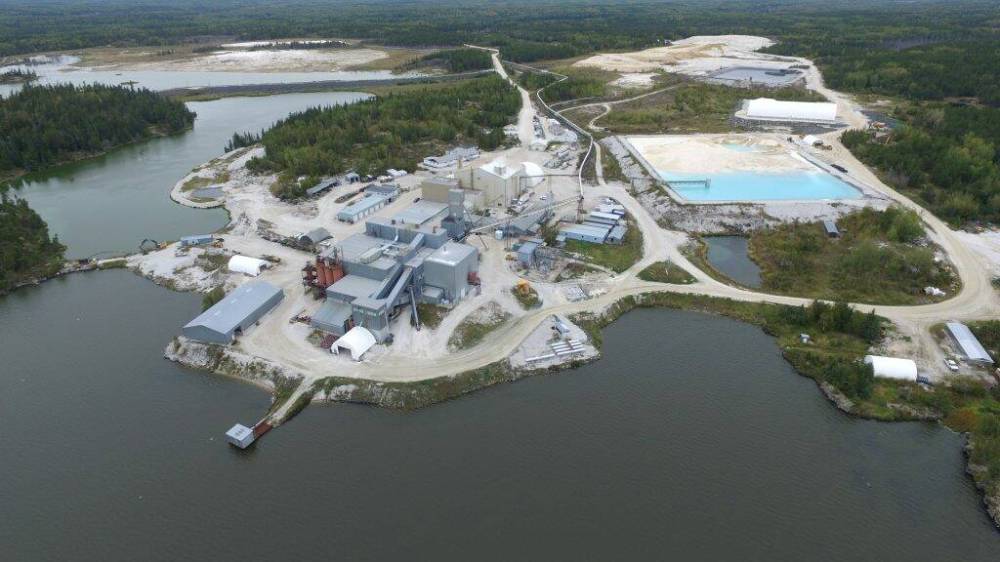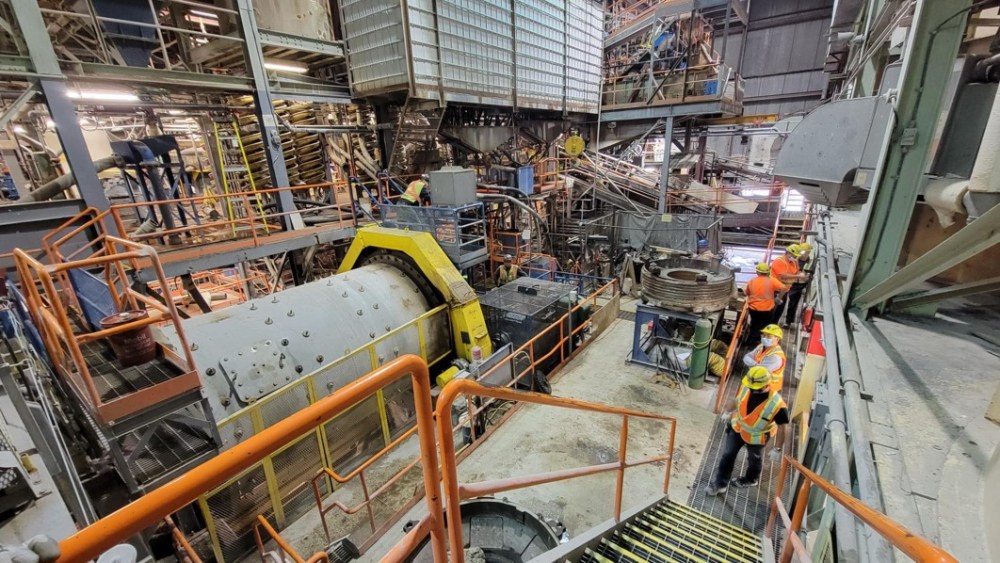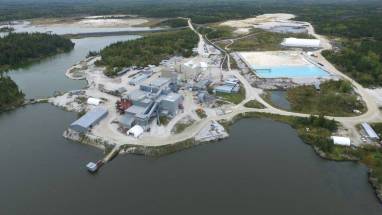Manitoba’s mining sector showing signs of life Global demand for lithium driving exploration, with 16 companies prospecting for the hot commodity
Read this article for free:
or
Already have an account? Log in here »
To continue reading, please subscribe:
Monthly Digital Subscription
$1 per week for 24 weeks*
- Enjoy unlimited reading on winnipegfreepress.com
- Read the E-Edition, our digital replica newspaper
- Access News Break, our award-winning app
- Play interactive puzzles
*Billed as $4 plus GST every four weeks. Offer only available to new and qualified returning subscribers. Cancel any time.
Read unlimited articles for free today:
or
Already have an account? Log in here »
Hey there, time traveller!
This article was published 07/12/2022 (785 days ago), so information in it may no longer be current.
Saskatchewan’s economy has been booming for years, partly because of the billions of dollars invested in potash mining.
Could lithium become Manitoba’s potash, driving investment and job creation in the north?
Since 2017, employment in the mining sector in Manitoba has fallen by 50 per cent to about 4,100.
During that time Vale shut down its nickel refinery and closed one of its nickel mines and HudBay closed its stalwart 777 mine in Flin Flon and a smaller mine called Reed Lake.
A would-be nickel mine started up and quickly closed in Wabowden in 2012 and the long-standing gold mine in Bissett has been on care and maintenance for a few years, although its current owner is “mining” the tailings for gold.
Although Manitoba has a long history of mining, the fact is there’s currently only three operating mines in the province one of which, the Tanco Mine, is the only lithium mine in the country.
But mineral extraction has been a viable industry in the province for more than a century with northern Manitoba dotted with the remnants of old mines.

While some industry officials claim that Manitoba is drastically under-explored, the demand for lithium needed to power the millions of electric vehicles coming on the market is starting to change that narrative.
According to Jeff Kraynyk, director of business development services at the province’s mines branch, Manitoba “has one the richest known lithium deposits in the world.”
Foremost Lithium, one of 16 exploration companies now actively searching for lithium in the province, is mounting a multi-million drilling program this year. One of its early target sites will be a shaft from a long abandoned former Sherritt mine near Snow Lake.
And not only is there much more exploration spending — which creates much-needed jobs and economic activity in the north — but there are currently two groups deep into the fact finding phase with the intention of building lithium processing facilities in the province, something that would require hundreds of millions of dollars of investment.
It’s not to say the industry is booming yet, but it’s in a far healthier state than the doldrums it’s been in for the past several years.
The province’s standing in the prestigious Fraser Institute Survey of Mining Companies international ranking of jurisdictions for investment attractiveness fell from No. 2 in 2017 to No. 37 in 2020.
It inched up to No. 32 in the latest survey that came out in April and by all rights it should climb higher next year because there is a lot going on and a lot of it has to do with lithium.
This year it is estimated there will be more than $150 million invested in mineral exploration in the province. That’s close to three times the average of the past few years.
Commodity price cycles have a lot to do with exploration intensity, but after the gutting of the province’s geological survey department under former Premier Brian Pallister, exploration companies found friendlier places to go.
The opposite of that is happening now. Foremost Lithium just sold a property in Northwest Territories and is using the proceeds to fund its Manitoba exploration.
“That was not a core asset,” said Jason Barnard, CEO of Foremost. “Now we can concentrate on the property we believe has more potential in Manitoba.”
The business environment is definitely changing. The province recently announced it would be investing $5 million to beef up its capacity to support the mining industry.
Premier Heather Stefanson and Natural Resources and Northern Development Minister Greg Nesbitt were both at the huge annual Prospectors and Developers Association of Canada (PDAC) conference this year trying to deliver the message that Manitoba is open for mining business.
But the real injection of activity has come from the demand for lithium, a critical mineral that’s is drastically short supply considering the demand for electric vehicles.
Phil Gross, CEO of Snow Lake Lithium, a junior mining company with perhaps the most promising lithium development property in the province near Snow Lake, said, “The path to green energy transition and de-carbonization runs through lithium. That’s something I think everyone has figured out now.”
Gross’s company recently teamed up with LG Energy Solutions, the South Korean battery giant. They are working together to determine the viability of a lithium processing facility in Winnipeg.
Gross said even if all the potential lithium sites around the world are successful, there will still be a supply-demand imbalance.
Tanco Mine — which was purchased by the Chinese company, Sinomine Resource Group Co., Ltd. in 2019 — is the other proponent interested in lithium processing in Manitoba. It currently ships lithium concentrate to a sister company in China.
Bill Curry, Sinomine’s resident vice-president, said a pre-feasability study on a processing plant should be done by the beginning of next summer.
Lithium exploration is concentrated in eastern Manitoba near Tanco’s site and around Snow Lake. Grid Metals, which has a project near Tanco, along with Snow Lake Lithium are considered the ones furthest along in their development. (It can take up to 10 years for exploration to turn into a producing mine.)
Inside the processing facility at the Tanco mine near Lac du Bonnet. (Sinomine Resource Group Co. Ltd.)
Lithium may be the enticement to come to Manitoba, but other issues may be keeping them here. The province is now providing three-year permits eliminating annual renewals and the $20 million Manitoba Mineral Development Fund that’s administered by the Manitoba Chambers of Commerce are a couple of new incentives on top of generous exploration tax credits and a new mine tax holiday creating what many are saying is a more welcoming environment.
The duty to consult First Nations whose territorial land may be impacted by mineral exploration or mining is now being carried out in a more responsible manner.
Jana Schott, assistant deputy minister of Natural Resources and Northern Development said, the new business climate is working.
“Especially companies looking for critical minerals like lithium and other minerals used in the renewable energy sector want to target jurisdictions that can offer them the lowest carbon footprint,” she said. “That has definitely been a growing issue over the last few years.”
Manitoba Hydro’s green electricity will form the cornerstone for Phil Gross’s vision of building the first all-electric mine in the world.
martin.cash@freepress.mb.ca

Martin Cash
Reporter
Martin Cash has been writing a column and business news at the Free Press since 1989. Over those years he’s written through a number of business cycles and the rise and fall (and rise) in fortunes of many local businesses.
Our newsroom depends on a growing audience of readers to power our journalism. If you are not a paid reader, please consider becoming a subscriber.
Our newsroom depends on its audience of readers to power our journalism. Thank you for your support.










